Embroidery hoops are an indispensable thing, especially for beginner needlewomen. They come in many shapes and sizes, so you can choose the most convenient and suitable option for yourself.
- To use or not to use
- Review and comparison of forms
- Universal round and oval
- Rectangular and square
- How to determine the correct size
- Classification by material of manufacture
- Wooden
- Made of plastic
- Metallic
- Types by tension method
- Classic tension options
- The structure and features of Q-Snap
- Self-hooping
- Stationary and mobile devices for embroidery
- Mobile for home and travel
- Floor-standing for convenient handicrafts
- Tabletop for the comfort of the needlewoman
- Chairlifts with fastening
- Special models
- Tapestry
- Adapted for machine embroidery
- What to choose for bead embroidery
- How to make embroidery hoops with your own hands at home
- What to replace embroidery hoops with
To use or not to use
Embroidery hoops are often used for embroidery. They really make the process more convenient, because holding the fabric with your fingers is very inconvenient. It doesn’t matter how the embroidery is done – cross stitch or satin stitch. Using a hoop can reduce the duration of the process by half, which is very useful when creating large-scale works, especially if the needlewoman is embroidering to order.

Please note! Using a hoop prevents the fabric from bunching up.
Review and comparison of forms
Embroidery hoops can be classified according to many characteristics and criteria, such as shape.
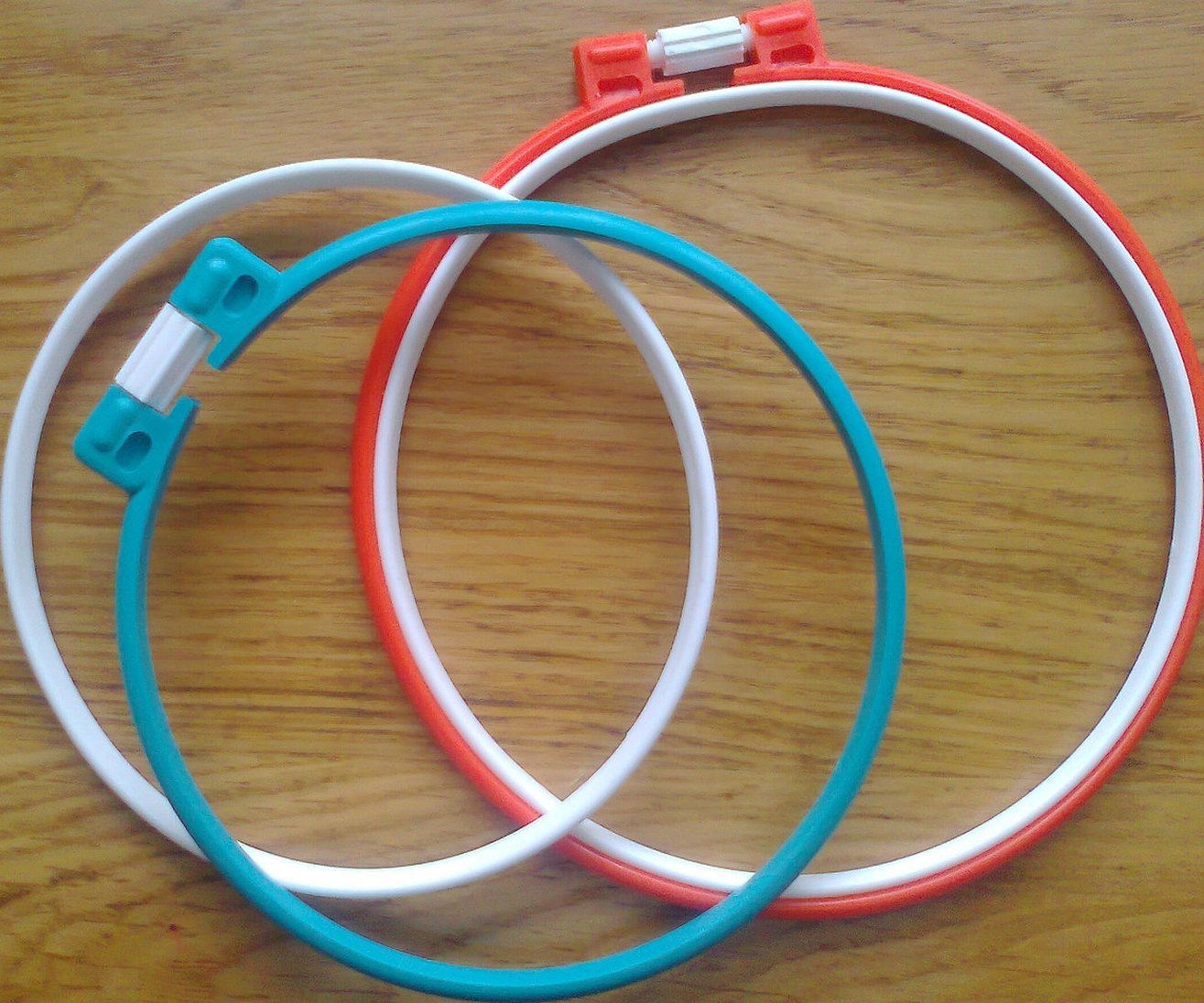
Universal round and oval
The most common are, of course, round and oval hoops. They usually come in the form of two rings of slightly different diameters that need to be put on top of each other. However, more convenient are models with special fastening mechanisms, with which you can adjust the tension of the fabric.
Rectangular and square
If you are creating a three-dimensional embroidery, you can use a square or oval hoop.
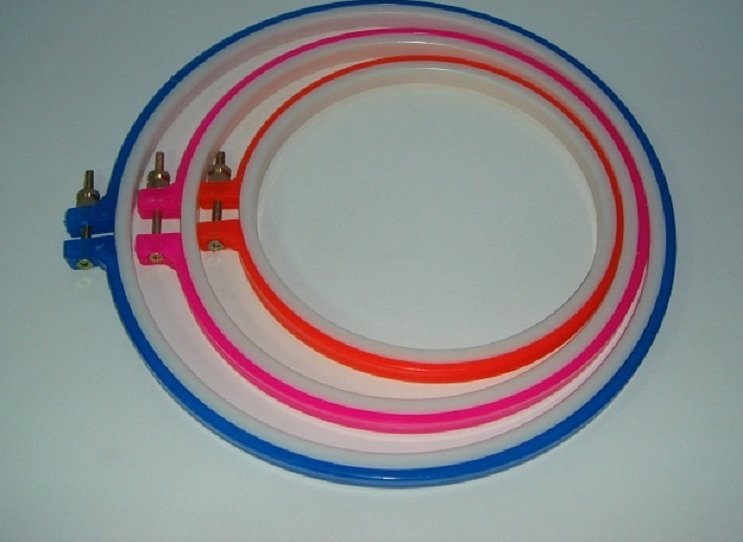
They are heavy in weight and can be used mainly at home. To secure the fabric, there are special clamps on the edges of square and rectangular models, with which it is very easy to adjust the tension of the fabric. In appearance, such models are similar to small floor looms.
How to determine the correct size
Before purchasing a hoop, be sure to measure the length and width of the fabric. For small canvases, models with a diameter of 10 to 15 centimeters are quite suitable; for larger ones, a diameter of 40 centimeters is selected.
The ideal size is the one where the hoop on the product does not have to be moved very often. Therefore, for very large works, you need to choose tabletop or floor-standing large square models to make the embroidery process easier. Q-Snap models are considered universal, they can be adjusted in size to any fabric.
Please note! There are very miniature hoops, but they are used for sewing on buttons or other small jewelry.
Classification by material of manufacture
The next criterion by which you need to select a hoop when purchasing it is the material it is made from.
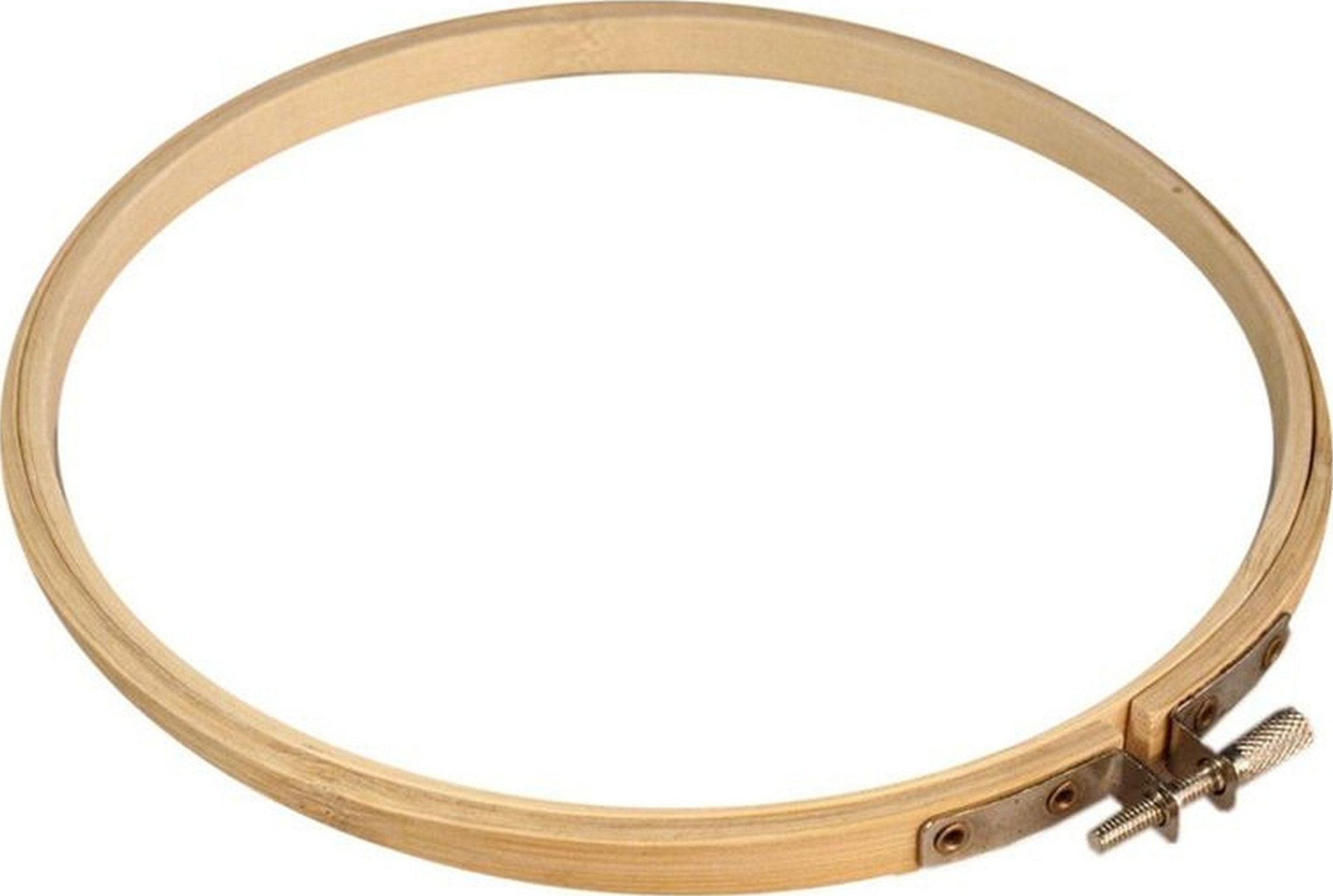
Wooden
The most popular hoops that allow you not to deform the fabric are wooden models. They are made from durable raw materials, usually oak or beech. In addition, they are simple in their design, but very functional.
Made of plastic
Plastic models are among the most easily accessible, sold in any handicraft store. Most often they are round in shape, sometimes with a screw for fastening. Their big advantage is their low cost and variety of types and sizes.

The main disadvantage of plastic hoops is the possibility of deformation of the finished design, since the threads of the fabric often catch on the edges of the rim.
Metallic
Cross stitching on hoops is also done using metal models. They are very reliable and, as a rule, can serve for a very long period of time. However, cheap varieties made of weak metals quickly deform, which affects the final result of the work.
In fact, apart from reliability and durability, such models do not have any special advantages. They are not so convenient to use, and they pull the fabric, which provokes the tightening of some stitches. And after removing from the hoop, round, distinct marks remain on the material.
Types by tension method
An important criterion when choosing a hoop that must be taken into account is the tensioning method.
Classic tension options
The most common hoops are two-hoop designs. Such models can be supplemented with a special fastening mechanism that is adjusted manually. Classic square models are equipped with separate strips that fasten the fabric on each edge.
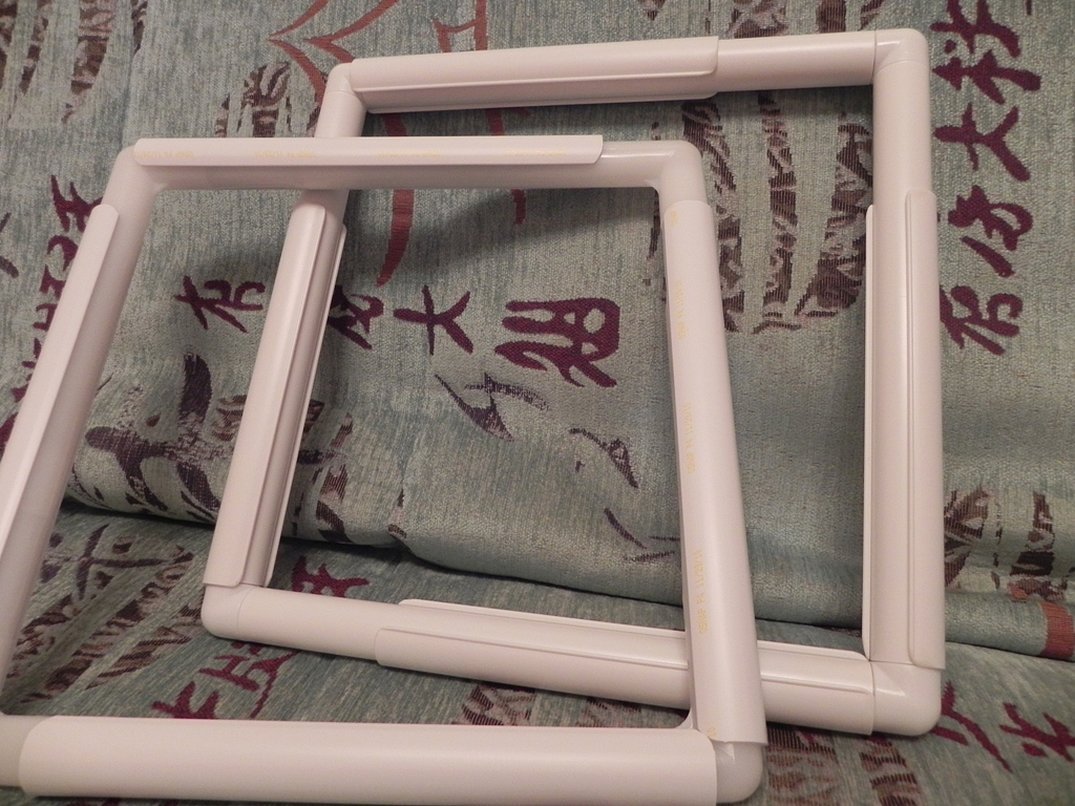
This method is used on plastic structures. On wooden ones there are special clamps with which the canvas is fixed.
The structure and features of Q-Snap
Q-Snap is essentially a disassemblable embroidery hoop. Its design consists of a set of plastic tubes that need to be connected into a rectangle. The size and shape of the hoop can be changed using extenders. To secure the canvas, special brackets are attached to each edge. The canvas is well fixed, and no creases or deformations remain on it.
Self-hooping
They appeared recently, so they are not very popular. They are very simple and reliable to use. The design consists of two circles, one made of plastic and the other of metal. On the metal ring there are two "ears" that need to be brought together, which secures the canvas.
Stationary and mobile devices for embroidery
Some needlewomen choose mobile hoops that they can take with them on the road and pursue their favorite hobby while leading an active lifestyle.
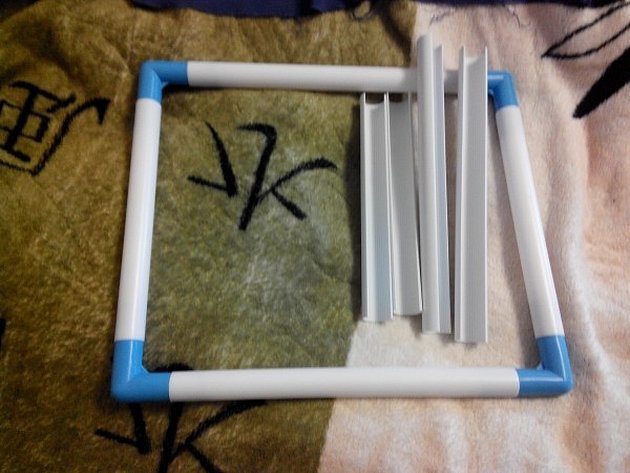
Mobile for home and travel
Such models are suitable for active people, and not for those who are used to spending their leisure time on their couch. You can embroider both in the park and when visiting. Models should be chosen either small or collapsible, so that it is easier to carry with you. The diameter of round structures should not exceed 30 centimeters, as well as the height of square ones. The most convenient are collapsible Q-Snap frames.
Floor-standing for convenient handicrafts
Large floor hoops are used for embroidery of large-sized works. Such constructions are usually made of wood and have a square shape. Tapestry hoops are especially suitable, as they securely fasten the fabric and do not leave pulled stitches on the finished embroidery.

Please note! Floor hoops have adjustable height.
Tabletop for the comfort of the needlewoman
Tabletop models come in both round and rectangular shapes. The material they are made from also varies. These pins are attached to the table with a clamp. It is easier to embroider with them than with floor models.
Chairlifts with fastening
Low floor chair hoops are good for the elderly and those with back pain. These are models for cross stitching with a stand that are attached to the armrests of chairs and armchairs. Or you can prop them up and secure them with your foot. The canvas is attached with strong clamps or regular wooden hoops.
Special models
Certain types of embroidery require the use of special hoops.
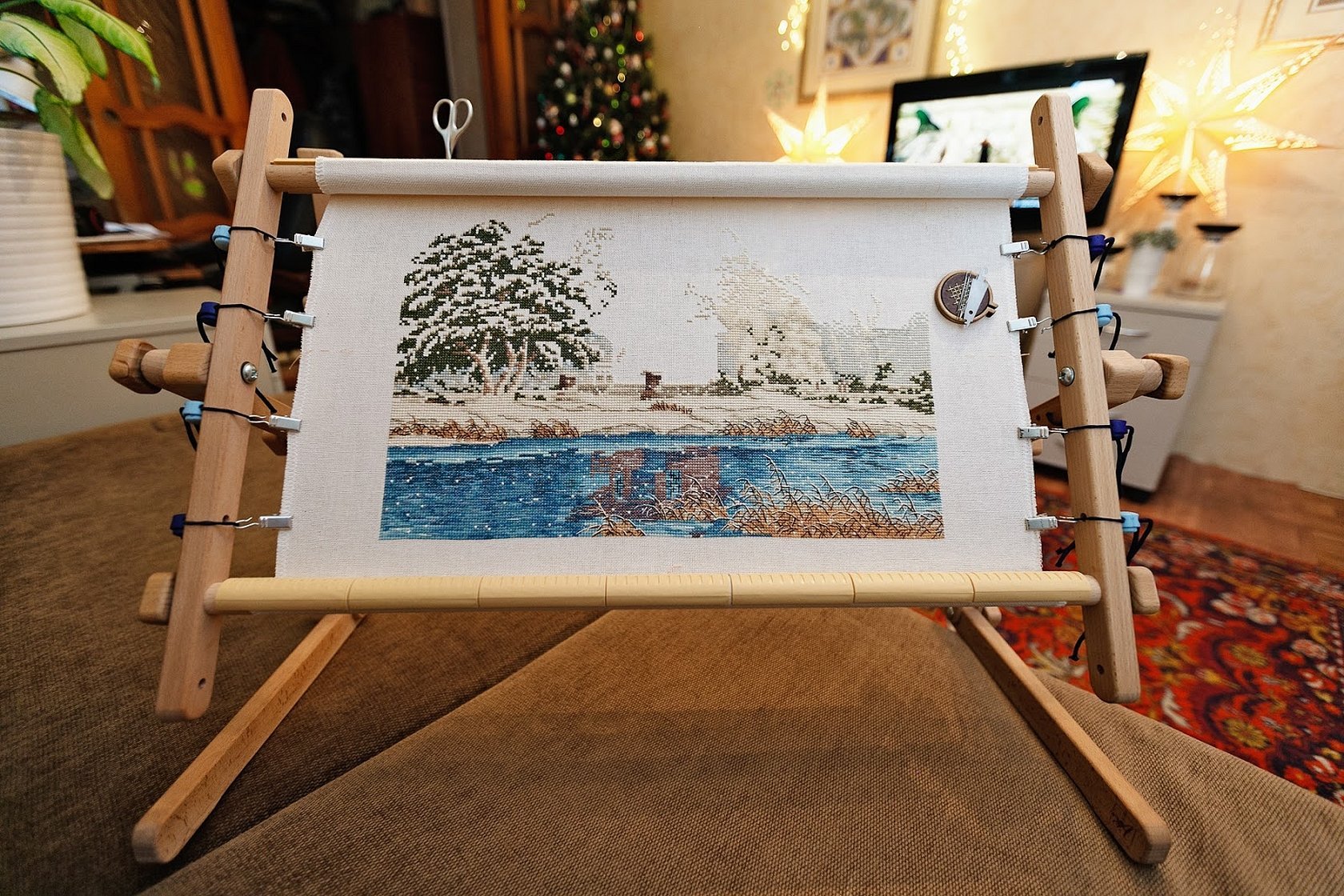
Tapestry
Tapestry models are suitable for all types of embroidery, as they are very easy to use. Usually, these are wooden rectangular structures, the canvas on which is attached with clamps. They are heavy, so they stand firmly on the surface. The finished embroidered work has no tension, punctures or deformations.
Adapted for machine embroidery
The main function of such models is smooth thread tension. They can be of different shapes, sizes and materials. These hoops are used for machine embroidery. However, there is no variety of such models, so it is difficult to select them for a certain brand of machine.

Please note! Experienced needlewomen advise buying round models for machine embroidery, which stretch the material more evenly.
What to choose for bead embroidery
Hoops for beadwork or Luneville embroidery should be round. In the Soviet Union, special models for such work were sold, but now they are harder to find.
How to make embroidery hoops with your own hands at home
DIY embroidery hoops, how to make them yourself? You need to take PVC pipes and build a square structure out of them. You can secure the fabric with special plastic clamps or a piece of the tube cut lengthwise.
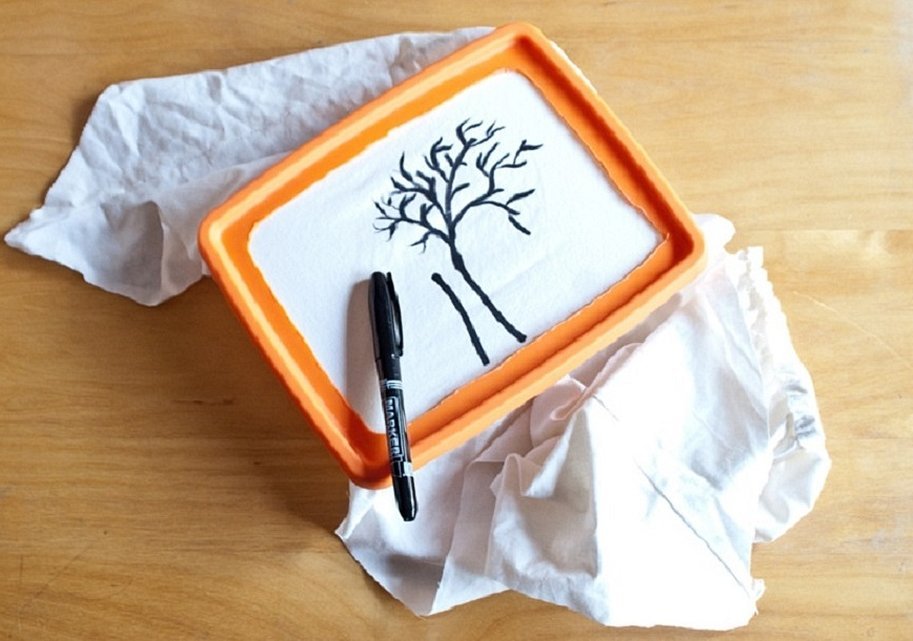
What to replace embroidery hoops with
One needlewoman on the Internet, having failed to find the necessary embroidery hoops in Mineralnye Vody, decided to share with her subscribers what can replace them. It is necessary to take a plastic container and cut out its entire inner part along the edge of the lid. In the end, only a frame of parts attached to each other should remain.
For easy and high-quality embroidery, you need to choose the right hoop model. Among the numerous variety of models, it is not difficult to choose the right one, you just need to know certain nuances of the embroidery process.




